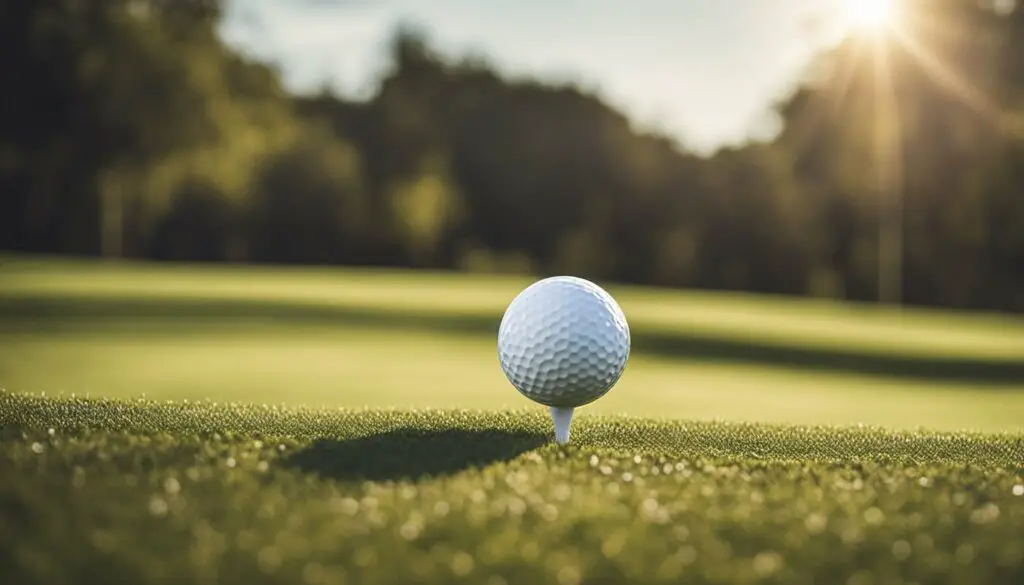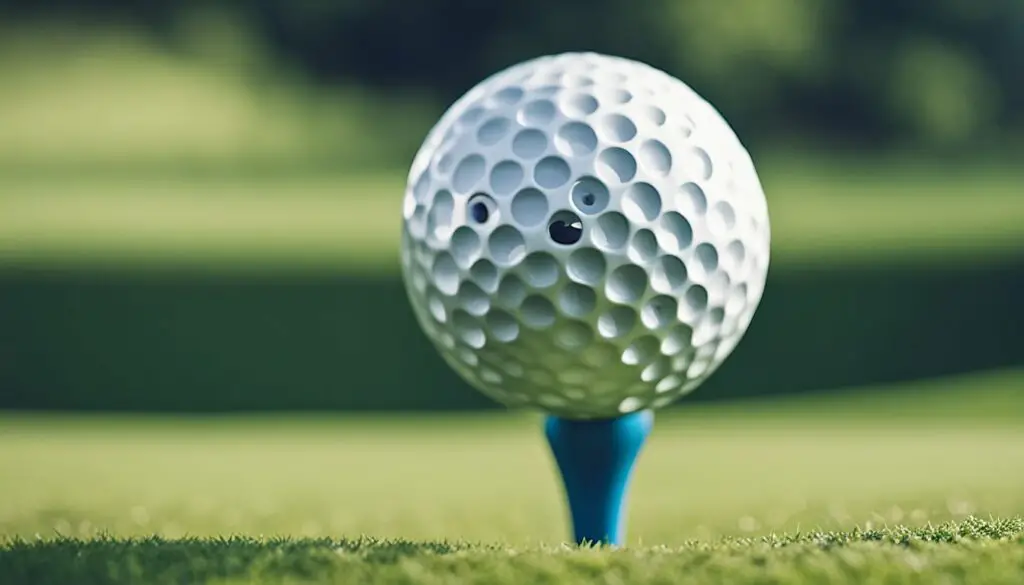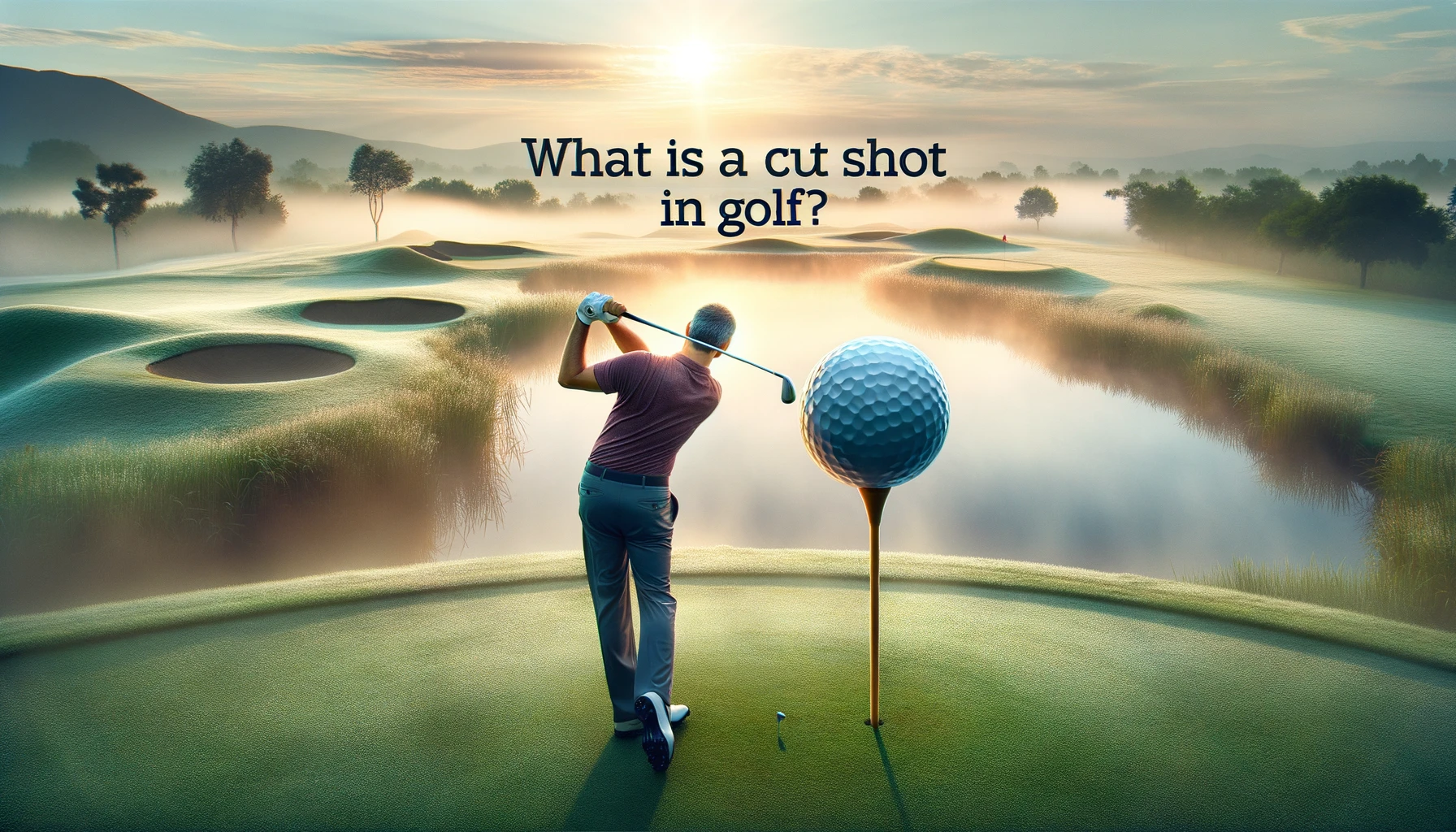The game of golf is filled with various techniques and strategies that can make a significant difference in a player’s performance. One such technique is the cut shot, which is a controlled golf shot that causes the ball to curve left-to-right in flight. This intentional ball movement is not a random occurrence but rather a calculated move to improve accuracy and navigate through challenging golf course layouts.

In order to execute a cut shot successfully, golfers need to understand the mechanics behind it and learn how to adjust their grip, stance, and swing accordingly. A well-executed cut shot can help players avoid hazards and manage difficult doglegs, making it an essential skill for golfers of all levels. Mastering the cut shot can help improve overall performance on the golf course and ultimately lead to lower scores.
Key Takeaways
- The cut shot is a controlled golf shot that curves left-to-right in flight
- Understanding the mechanics behind a cut shot is essential for successful execution
- Mastering the cut shot can improve overall performance and lead to lower scores
Understanding the Basics of a Cut Shot in Golf
A cut shot in golf is a type of controlled golf shot where the golfer intentionally induces a fade ball flight to curve the ball’s path. For right-handed golfers, this means the golf ball travels from left to right, while left-handed golfers experience a right-to-left curve. Essentially, a cut shot and a fade are the same thing, though the term “cut” emphasizes the intended control and execution of the shot.
The purpose of a cut shot is to navigate around obstacles, such as trees or bunkers, and position the ball strategically on the course. This shot can also be beneficial when playing on a course with doglegs or trying to avoid hazards on a specific side of the fairway.
To execute a cut shot, the golfer must consider several factors that influence the golf ball’s flight path, such as clubface angle and swing path. To create the desired left-to-right or right-to-left spin, the clubface should be slightly open relative to the swing path at impact. This open clubface imparts a side spin on the golf ball, causing it to curve in the intended direction.
Practicing the cut shot can improve a golfer’s overall game by providing more control on the course and expanding their shot-making options. It is essential to invest time in mastering the proper execution of a cut shot, as incorrect technique can lead to unintentional slices or loss of distance.
While learning to hit a cut shot, golfers should focus on consistent ball striking and pay attention to their swing path and clubface angles. Continuous practice, along with any necessary adjustments, will help golfers become more confident and knowledgeable about executing this powerful and strategic golf shot.
How to Perform a Cut Shot
A cut shot is a controlled golf shot that curves from left to right for a right-handed golfer and from right to left for a left-handed golfer. It is intentionally played to avoid obstacles or target a specific area on the green. To perform a cut shot successfully, golfers need to adjust their stance, grip, and swing path.
First, focus on the stance. For a right-handed golfer, the feet should be aimed slightly left of the target, while a left-handed golfer’s feet should be aimed to the right of the target. Because the golfer wants the ball to curve back to the target, this open stance should not disrupt the accuracy of the shot.
Grip plays a crucial role in executing a cut shot. Holding the grip slightly weaker than usual helps maintain an open clubface through impact, allowing the shot to curve as intended. This means that the golfer should rotate their hands towards their lead foot (left foot for a right-handed golfer, and vice versa).
The swing path should be more inside-out, meaning the clubhead should approach the ball from inside the target line, making contact with the ball, and then extending back towards the outside of the target line on the follow-through. This inside-out swing path, combined with an open clubface, creates the spin necessary for the cut shot.
During the downswing, the golfer should maintain a smooth and controlled motion, as any abrupt movements could compromise the intended flight path and result in an undesirable shot. Ensure the clubface remains open at impact to generate the appropriate spin and curve.
Finally, the follow-through should be smooth and uninhibited, allowing the natural momentum of the downswing to guide the hands and club into a finishing position. The golfer’s weight should transfer to the lead foot when completing the cut shot, signaling a successful transfer of energy and control throughout the swing.
By following these adjustments to stance, grip, swing path, downswing, and follow-through, a golfer can confidently execute a cut shot and better navigate the challenges they face on the course.
Importance of a Cut Shot on the Golf Course
A cut shot can significantly improve a golfer’s performance by providing the ability to navigate around various obstacles on the golf course. This skillful shot is essential for both beginners and professionals, offering several advantages, including increased control, accuracy, and versatility.
Hitting a well-intended cut shot allows players to overcome common challenges on the course, such as navigating doglegs, where the fairway bends either left or right. This shot can curve the ball around the bend, ensuring an efficient path towards the green and avoiding potential hazards. A proper cut shot can also help evade greenside hazards, such as bunkers and water, which often surround the greens.
When faced with obstructions like woods, trees, or other objects blocking the golfer’s path, a cut shot can offer a strategic solution. By shaping the golf ball’s flight to curve around these obstacles, the player is able to maintain distance, control, and accuracy. In addition, the cut shot can provide assistance in dealing with unfavorable course conditions. For example, if playing from the rough, a cut shot may help a golfer regain control and return to the fairway more effectively than other shot options.
The approach shot, which is the shot aimed at landing the ball on the green, can benefit immensely from a cut shot. Players can rely on the left-to-right movement (for right-handed golfers) or right-to-left movement (for left-handed golfers) to better position the ball for putting. This shot aids in steering clear of hazards and obstructions near the green, setting the player up for a more successful putt.
In conclusion, the importance of a cut shot on the golf course cannot be overstated. It helps golfers negotiate the ever-changing challenges on the course, such as doglegs, hazards, and various obstacles, while maintaining distance, accuracy, and control. Mastering this skill transforms a golfer’s game, significantly enhancing their overall performance.
Mastering the Cut Shot

The cut shot is a valuable technique in a golfer’s arsenal, as it can help navigate obstacles on the course and control the ball’s trajectory. This type of shot causes the ball to curve in-air, resulting in a fade. For right-handed golfers, this means the ball flight path moves from left to right, while left-handed golfers will experience a right-to-left curve.
To execute a cut shot, the golfer must make slight adjustments to their stance, grip, and clubface orientation. These changes help create the desired spin on the golf ball, which is essential for inducing the fade effect. A golfer may choose to open their stance slightly or open the clubface while maintaining their original stance, whichever feels more comfortable.
During the swing, the golfer should aim to strike the ball with an open clubface upon impact. This is achieved by adjusting the grip on the club, turning it to the right for right-handed players or left for left-handed players. It is crucial to maintain a smooth, controlled backswing and follow-through for the best results.
In addition to refining their technique, golfers must also consider club selection and ball position when mastering the cut shot. Typically, utilizing a driver or longer clubs can help achieve greater fade and power. However, it’s essential to practice with various clubs to determine which is most effective for individual preferences.
Ball position also plays a significant role in executing a successful cut shot. Golfers should experiment with different ball positions in their stance to find the optimal placement for generating the desired spin and trajectory.
By practicing and perfecting the cut shot, a golfer can add a versatile, reliable shot to their repertoire. This skill allows them to navigate around obstacles such as trees and target specific locations on the green, ultimately improving their overall performance on the course.
Common Problems and Fixes of a Cut Shot
A cut shot in golf is a controlled shot, often used to navigate around obstacles or position the ball strategically on the course. It is characterized by a left-to-right spin for right-handed golfers or right-to-left spin for left-handed golfers. However, golfers may encounter several issues and mistakes while attempting a cut shot. To help ensure a successful and accurate cut shot, here are some common problems and their fixes:
1. Slice: A slice is an unintentional and uncontrolled left-to-right curving shot for right-handed golfers, or vice versa for left-handed golfers. It can lead to loss of distance and landing the ball in undesirable areas such as hazards.
Fix: To correct a slice, ensure proper alignment and grip. Close the clubface slightly during setup and follow a more inside-to-out swing path. This will help counteract the outside-to-inside swing path responsible for the slice.
2. Open stance: An excessively open stance can lead to an exaggerated cut shot, which may cause the ball to curve too much or land off-target.
Fix: While an open stance is necessary for a cut shot, keep the shoulders aimed at the target and avoid excessive pivoting of the feet to maintain control over the shot.
3. Push cut: A push cut occurs when the ball starts to the right of the target line (for right-handed golfers) and adds a left-to-right spin, moving further right.
Fix: To fix a push cut, adjust the setup, ensuring the clubface is slightly closed. Make sure to correctly follow through, with the swing path inside-to-out, maintaining a balanced stance throughout the swing.
4. Pull cut: A pull cut happens when the ball starts left of the target line (for right-handed golfers) and then curves with a left-to-right spin, ending up closer to the target but possibly still off course.
Fix: To rectify a pull cut, address the ball properly and realign your stance, ensuring the clubface is aimed slightly left of the target. Focus on making a smooth, in-to-out swing path.
5. Turf interaction: A poor cut shot can sometimes result from improper turf interaction, causing the club to hit the ground before impact with the ball or creating excessive divots.
Fix: Maintain a good swing tempo and shift weight smoothly during the swing to ensure better contact with the ball. Practice on different types of turf to get comfortable with various ground conditions.
By addressing these common problems and implementing the corresponding fixes, golfers can improve their cut shot execution and gain better control over their game.
Frequently Asked Questions
How is a cut shot different from a draw shot in golf?
A cut shot and a draw shot are two distinct types of shots in golf that create different ball flight paths. A cut shot curves the ball from left to right (for a right-handed player) in the air, while a draw shot does the opposite, curving the ball from right to left. The cut shot is achieved by applying clockwise spin on the ball, while a draw shot is achieved by applying counterclockwise spin.
What is the shape of the ball flight in a cut shot?
The shape of the ball flight in a cut shot is a gentle curve from left to right (for a right-handed player), as the ball moves around obstructions on the course. This action is achieved by imparting clockwise spin on the ball, which causes it to spin away from the golfer’s body during flight.
How can I hit a cut shot with my driver?
To hit a cut shot with your driver, open your stance or slightly open your clubface while maintaining your original stance. Whichever option you find more comfortable. Then, swing at the ball and make sure your clubface is open upon impact. Ensure you are swinging outside to in, which creates the spin needed for the cut shot.
Is a fade the same as a cut shot?
Yes, a fade is similar to a cut shot – a golf shot that curves gently from left to right (for a right-handed player) in the air. While the terms are often used interchangeably, they may convey slightly different levels of curvature. A cut shot may have a more pronounced curve, while a fade could refer to a more subtle curve.
What are the benefits of a cut shot in golf?
A cut shot provides several advantages in golf. It allows players to navigate around obstructions and maneuver tricky doglegs on the course, enabling them to reach the target more effectively. The cut shot can also create more control and precision when approaching the green, leading to better positioning for the putt.
What are the best techniques to play a cut shot effectively?
To play a cut shot effectively, follow these steps:
- Choose either to open your stance or slightly open your clubface, whichever feels more comfortable.
- Position the ball slightly farther back in your stance to help promote an outside-to-in swing path.
- Swing at the ball with an outside-to-in motion, maintaining the open clubface upon impact.
- Ensure that the clubface remains open through the follow-through, which helps create the required spin for a cut shot.
By mastering these techniques, you’ll be better equipped to execute a cut shot on the course, providing you with better control and more options during your round.
